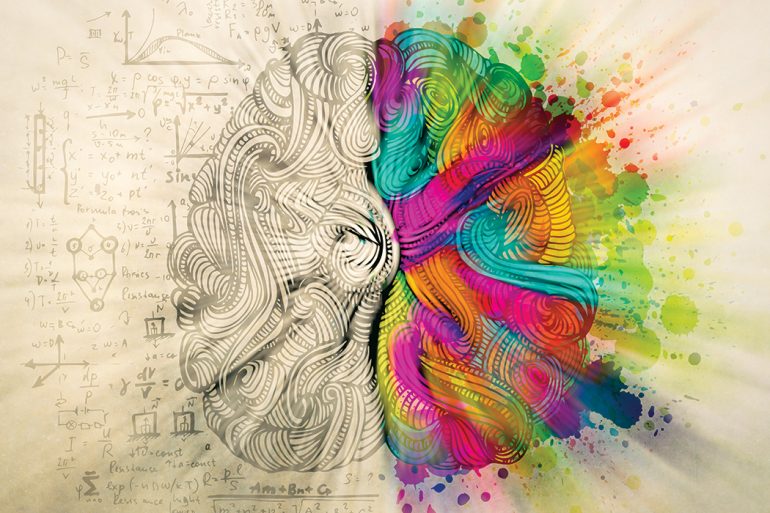I’ve gotten fascinated with some of the advances in neuroscience after reading about the research into neuroscience and morality by Sam Harris, Jonathan Haidt, Baba Shiv, and others. More recently, I was fortunate to pick up a new book on neuroplasticity, which shows how, when and why the brain can literally “change itself”, based on external events, developmental milestones (this is particularly important for parents of young children!), nutrition and the impact of training and “deliberate practice.” Below are extracts from: Norman Doidge, M.D. “The Brain That Changes Itself.” iBooks.
Brain Maps And The Plastic Brain
We know that spatial reasoning is necessary for forming a mental map of where things are. We use this kind of reasoning to organize our desks or remember where we have left our keys. Kinesthetic perception allows us to be aware of where our body or limbs are in space. Our frontal lobes allow us to seek out what is relevant and to plan, strategize, form intentions, and pursue them. The first evidence for the plasticity of our brains comes from the effect of practicing a new skill, under the right conditions, which has been shown to change hundreds of millions and possibly billions of the connections between the nerve cells in our brain maps. It turns out that the brain can reorganize its maps. Sensory and motor brain maps, like geographical maps, are topographical, meaning that areas adjacent to each other on the body’s surface are generally adjacent to each other on the brain maps. These maps are neither immutable within a single brain nor universal but vary in their borders and size from person to person.
Plasticity was first evidenced in the development of infants, particularly in experiments with cats, where a ‘critical period’ was discovered, from the third to the eighth week of life, when the newborn kitten’s brain had to receive visual stimulation in order to develop normally. (When one eye was sewn shut, the part of the kitten’s brain that had been deprived of input from the shut-eye did not remain idle. It began to process visual input from the open eye, as though the brain didn’t want to waste any ‘cortical real estate’ and had found a way to rewire itself—another indication that the brain is plastic in the ‘critical period.’)
Each neural system has a different critical period, or window of time, during which it is especially plastic and sensitive to the environment, and during which it has rapid, formative growth. Language development, for instance, has a critical period that begins in infancy and ends between eight years and puberty. At the cellular level, when we say that the brain is plastic, specifically what we mean is that neurons “rewire” themselves, i.e. that alterations occur at the synapse, strengthening and increasing, or weakening and decreasing, the number of connections between the neurons.
The competitive nature of plasticity affects us all. There is an endless “war of nerves” going on inside each of our brains. If we stop exercising our mental skills, we do not just forget them: the brain map space for those skills is turned over to the skills we practice instead. Competitive plasticity also explains why our bad habits are so difficult to break or “unlearn.” When we learn a bad habit, it takes over a brain map, and each time we repeat it, it claims more control of that map and prevents the use of that space for “good” habits. That is why “unlearning” is often a lot harder than learning, and why early childhood education is so important—it’s best to get it right early, before the “bad habit” gets a competitive advantage. Our new theory is that neurons in brain maps develop strong connections to one another when they are activated at the same moment in time – “neurons that fire together wire together”, and “neurons that fire apart wire apart.” Note that brain maps are not anatomically based, yet a topographic order emerges because many of our everyday activities involve repeating sequences in a fixed order.
Brain Plasticity and Neurological Problems Such As Obsessive-Compulsive Disorder (OCD)
We detect mistakes with our orbital frontal cortex, part of the frontal lobe on the underside of the brain just behind our eyes. Scans show that the more obsessive a person is, the more activated the orbital frontal cortex is. Once the orbital frontal cortex has fired the “mistake feeling,” it sends a signal to the cingulate gyrus, located in the deepest part of the cortex. The cingulate triggers the dreadful anxiety that something bad is going to happen unless we correct the mistake and sends signals to both the gut and the heart, causing the physical sensations we associate with dread.
The first step for a person having an OCD attack is to relabel what is happening to her, so that she realizes that what she is experiencing is not an attack of germs, AIDS, or battery acid but an episode of OCD. The OCD patient should also remind herself that the reason the attack doesn’t go away immediately is because of a faulty circuit in their brains. Some patients find it helpful, in the midst of an attack, to look at the pictures of an abnormal OCD brain scan in Schwartz’s book “Brain Lock”, and compare it with the more normal brain scans that Schwartz’s patients developed with treatment, to remind themselves that it is possible to change circuits.
The next crucial step is to refocus on a positive, wholesome, ideally pleasure-giving activity the moment she becomes aware she is having an OCD attack. With obsessions and compulsions, “the more you do it, the more you want to do it; the less you do it, the less you want to do it.”It is essential to understand that it is not what you feel while applying the technique that counts, it is what you do. The struggle is not to make the feeling go away; the struggle is not to give in to the feeling”—by acting out a compulsion or thinking about the obsession. Because neurons that fire together wire together, by doing something pleasurable in place of the compulsion, patients form a new circuit that is gradually reinforced instead of the compulsion. Also because neurons that fire apart wire apart, by not acting on their compulsions, patients weaken the link between the compulsion and the idea it will ease their anxiety.
Brain Plasticity and Pain
Normal pain, or “acute pain,” alerts us to injury or disease by sending a signal to the brain, saying, “This is where you are hurt—attend to it.” But sometimes an injury can damage both our bodily tissues and the nerves in our pain systems, resulting in “neuropathic pain,” for which there is no external cause. Our pain maps get damaged and fire incessant false alarms, making us believe the problem is in our body when it is in our brain. Pain, like body image, is created by the brain and projected onto the body. This assertion is contrary to the traditional neurological view of pain that says that when we are hurt, our pain receptors send a one-way signal to the brain’s pain center and that the intensity of pain perceived is proportional to the seriousness of the injury. How much pain we feel is determined in significant part by our brains and minds—our current mood, our past experiences of pain, our psychology, and how serious we think our injury is. Pain is a complex system under the plastic brain’s control: “Pain is an opinion on the organism’s state of health rather than a reflexive response to injury.”
Brain Plasticity & Training
Daily training and monitoring of brain learning-centers show dramatic short-term changes in times as short as a week. Over weekends and months, more permanent changes are seen after a weekend of rest. Differing results on Monday and Friday suggest differing plasticity mechanisms. The fast Friday changes strengthen existing neuronal connections and unmask buried pathways. The slower, more permanent Monday changes suggest the formation of brand-new structures, probably the sprouting of new neuronal connections and synapses. Maintaining improvement and making a skill permanent requires the slow steady work that forms new connections. If a learner thinks he is making no cumulative progress or feels his mind is “like a sieve,” he needs to keep at the skill until he gets “the Monday effect.” Studies with first-time Braille readers indicates that this can take as long as six months. The Friday-Monday difference is why some people, the “tortoises,” who seem slow to pick up a skill, may nevertheless learn it better than their “hare” friends—the “quick studies” who won’t necessarily hold on to what they have learned without the sustained practice that solidifies the learning.
Remarkably, mental practice alone can produce the same physical changes in the motor system as actually playing a complex musical piece. Mental practice or mental rehearsing is the phenomenon when we memorize answers for a test, learn lines for a play, or rehearse any kind of performance or presentation. But because few of us do it systematically, we underestimate its effectiveness. Action and imagination are truly integrated, despite the fact that we tend to think of imagination and action as completely different and subject to different rules. Our brains are so plastic that even when we do the same behavior day after day, the neuronal connections responsible are slightly different each time because of what we have done in the intervening time. The mental “tracks” that get laid down can lead to habits, good or bad.
The Brain As A Series of Competing Operators!
Our brain is organized in a series of specific operators, each operator being a processor that, instead of processing input from a single sense, such as vision, touch, or hearing, processes more abstract information. One operator processes information about spatial relationships, another movement, and another shapes. Operators appear to be selected by competition. The operator theory draws on the theory of neuronal group selection developed in 1987 by Nobel Prize winner Gerald Edelman, who proposed that for any brain activity, the ablest group of neurons is selected to do the task. There is a neural Darwinism going on all the time between operators to see which ones can most effectively process signals from a particular sense and in a particular circumstance. In this sense, each time we make a decision (even the same decision!), a different operator (or sub-state) of the brain was selected to come up with that decision.
In summary, we have discovered that, even late in life, deliberate practice, rest, and maintenance are critical to reshaping the way we think, eliminating bad habits and cultivating good ones, and even managing our response to pain and other neurological compulsions. For parents in particular, being aware of their infant’s rapid brain changes, as well as changes later in childhood and adolescence (particularly the ability to cultivate new languages, and the neural ‘pruning’ that goes on during the teen years), is essential if we wish to cultivate habits of success in our children.






I like the report